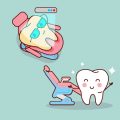Understanding Your Cheek Filler Results
When you first look in the mirror after getting cheek fillers, it’s common to feel uncertain or even dissatisfied with your results. However, understanding the natural progression of filler treatments is essential before making any decisions about corrections or dissolving. Immediately after the procedure, swelling, minor bruising, and asymmetry can temporarily affect how your cheeks appear. It’s also important to remember that dermal fillers need time to settle and integrate with your facial tissues.
Typical Post-Procedure Changes
| Change | Expected Duration | What You Should Know |
|---|---|---|
| Swelling | 3-7 days | This is normal and usually subsides within a week. |
| Bruising | Up to 10 days | Mild bruising may occur at injection sites but fades gradually. |
| Tenderness or Firmness | 1-2 weeks | The treated area may feel different until the filler integrates fully. |
| Visible Results Stabilize | 2-4 weeks | Your final look becomes apparent as swelling resolves and filler settles. |
How Long Does It Take for Fillers to Settle?
Most hyaluronic acid-based cheek fillers take around two to four weeks to completely settle into place. During this period, it’s normal for the appearance of your cheeks to shift slightly as swelling decreases and the product integrates with surrounding tissues. Patience is key—rushing to judgment too early can lead to unnecessary worry or premature corrective procedures.
Assessing If Your Outcome Is Truly Unsatisfactory
If you’re unhappy with your post-filler look, consider waiting until the full settling period has passed. Compare your current appearance with pre-treatment photos and evaluate if concerns like unevenness or excessive fullness persist beyond the expected healing timeline. Consulting with your injector for a professional assessment can also help determine whether what you’re experiencing is part of the normal process or if revision might be needed.
2. Communicating With Your Provider
When you’re unhappy with your cheek fillers, one of the most important steps is to open a clear and honest conversation with your injector. Addressing your concerns early helps prevent misunderstandings and allows your provider to suggest the best solution tailored to your needs. Remember, in the U.S., aesthetics providers are accustomed to feedback and value patient satisfaction, so don’t hesitate to reach out.
Why Open Communication Matters
Your provider’s expertise includes not only administering fillers but also managing post-treatment expectations and corrections. By voicing your concerns—whether its about asymmetry, lumps, or simply not loving the look—you empower your injector to assess the situation professionally. Most reputable clinics offer follow-up appointments specifically for these discussions.
Questions to Ask During Your Follow-Up Appointment
| Question | Why It Matters |
|---|---|
| Is what I’m experiencing normal? | Helps determine if what you see or feel is part of typical healing or an issue needing correction. |
| What are my options for revision? | Gives insight into whether waiting, massaging, dissolving, or adding more product is appropriate. |
| Can hyaluronidase be used to dissolve these fillers? | Confirms if a dissolving enzyme is suitable for your specific filler type (most commonly hyaluronic acid-based). |
| What results can I expect after dissolving or revision? | Sets realistic expectations for outcomes and timelines for improvement. |
| Are there any risks with dissolving or adding more filler? | Keeps you informed about potential side effects or complications before proceeding. |
Tips for Effective Communication
- Bring photos of your face before and after treatment for reference.
- Be specific about what you dislike (e.g., “My cheeks look too puffy on one side”).
- Avoid self-diagnosing; let the professional assess and recommend solutions.
- If you feel uncomfortable with your original provider, seeking a second opinion from another board-certified injector is always an option in the U.S.
Open communication creates a collaborative approach, ensuring you feel supported as you work toward achieving results that boost your confidence and meet your aesthetic goals.
![]()
3. Options for Dissolving Cheek Fillers
If you’re unhappy with your cheek fillers, there are safe and effective options to reverse the results. The most common method for dissolving hyaluronic acid-based fillers is the use of an enzyme called hyaluronidase. This treatment is widely used in the United States and is considered the gold standard for undoing unwanted filler effects.
How Hyaluronidase Works
Hyaluronidase is an injectable enzyme that breaks down hyaluronic acid, allowing your body to naturally absorb and remove the filler material. It’s typically administered by a board-certified dermatologist, plastic surgeon, or experienced injector in a medical setting. The procedure is relatively quick—often taking less than 30 minutes.
What to Expect During the Process
| Step | Description |
|---|---|
| Consultation | Your provider will assess your concerns, review your medical history, and discuss realistic expectations. |
| Patching & Testing | A patch test may be performed to rule out allergic reactions to hyaluronidase. |
| Treatment | Hyaluronidase is injected directly into the treated areas. You might feel mild stinging or discomfort. |
| Results | Dissolving can start within hours, but full results may take up to two weeks as swelling subsides. |
| Follow-Up | Your provider may schedule a follow-up visit to ensure satisfactory results or discuss further revisions if needed. |
Other Methods and Considerations
If your fillers are not made of hyaluronic acid (for example, calcium hydroxylapatite or poly-L-lactic acid), hyaluronidase will not work. In these cases, options may include waiting for natural breakdown over time, massaging the area (if recommended by your provider), or very rarely surgical removal. Always consult with a reputable medical professional to determine the safest approach based on your specific situation and filler type.
Key Takeaway
Dissolving cheek fillers with hyaluronidase is generally safe when performed by an experienced provider. Understanding the process and having realistic expectations will help you make informed decisions about managing unwanted filler results.
4. Revision Procedures: Refining Your Results
If youre not satisfied with your cheek filler results, dont worry—refining and adjusting your appearance is possible with several revision procedures. Working closely with a skilled injector or board-certified dermatologist can help you achieve the look you originally envisioned. Here are some common strategies for correcting or enhancing unsatisfactory cheek fillers:
Options for Cheek Filler Revisions
| Revision Option | Description | Best For |
|---|---|---|
| Add-On Treatments | Injecting additional filler to balance uneven areas or enhance volume. | Mild asymmetry, subtle contour adjustments. |
| Different Injection Techniques | Using advanced methods (e.g., microdroplet technique) for smoother integration and natural results. | Improving texture, reducing lumps, achieving a softer look. |
| Selecting New Products | Switching to a different filler type (e.g., firmer vs. softer hyaluronic acid). | Adjusting firmness, longevity, or overall appearance. |
| Dissolving Partial Filler | Targeted use of hyaluronidase to remove only excess or misplaced product. | Overfilling, misplaced filler, correcting specific areas without full removal. |
| Layering With Other Treatments | Combining fillers with treatments like lasers, microneedling, or skin tightening devices. | Refining skin texture, improving lift, enhancing overall results. |
What to Expect During Revision Appointments
Your provider will assess your current results and discuss your goals in detail. A tailored revision plan may involve one or more sessions depending on the complexity of the correction. Its important to allow time between treatments for swelling to subside and true results to emerge before making further adjustments.
The Importance of Communication and Realistic Expectations
A successful revision often hinges on open communication with your injector about what you want—and what’s realistically achievable based on your facial anatomy and previous treatments. Dont hesitate to ask questions about why certain techniques or products are recommended for your situation.
5. Emotional Impact and Decision Making
Cosmetic procedures like cheek fillers can have a significant emotional impact, especially if the results dont meet your expectations. Its common to feel disappointed, anxious, or even regretful. Addressing these feelings is just as important as managing the physical results. Recognizing your emotions and understanding that dissatisfaction is valid can help you make clear and empowered decisions about your next steps.
Understanding Emotional Responses
Its normal to feel a range of emotions after an aesthetic treatment, particularly if the outcome isnt what you hoped for. These feelings may include:
| Emotion | Possible Cause | How to Address It |
|---|---|---|
| Anxiety | Unexpected results or fear of permanent changes | Communicate with your provider about options |
| Disappointment | Results not matching expectations | Review before/after photos, discuss goals again |
| Regret | Wishing you hadnt done the procedure | Consider dissolving fillers, seek support from friends or professionals |
| Embarrassment | Visible changes not aligning with self-image | Talk to trusted people, remember cosmetic treatments are common in the U.S. |
Tools for Making Empowered Choices
- Give Yourself Time: Many filler issues resolve or improve over a few weeks. Waiting before making further decisions can be helpful.
- Stay Informed: Research your options for dissolving or revising fillers. Understanding the process helps reduce anxiety.
- Talk Openly: Share your concerns honestly with your injector. A good provider will listen and offer realistic solutions.
- Seek Support: Talk to friends or join online communities where people share similar experiences—knowing youre not alone is empowering.
When to Seek a Second Opinion
If youre unsure about your providers recommendations or feel your concerns arent being addressed, it may be time to seek a second opinion. A fresh perspective from another experienced injector can provide new options and reassurance. Remember, in the U.S., seeking multiple opinions is common practice in both medical and cosmetic fields, and its a proactive way to ensure you get the outcome that feels right for you.
6. How to Choose the Right Injector for Next Time
If you’ve had a disappointing experience with cheek fillers, choosing the right injector for your next treatment is crucial. The right provider can make all the difference in achieving natural-looking, satisfying results. Here are some expert tips to help you research qualifications, ensure clear communication, and protect yourself from future unsatisfactory outcomes.
Researching Provider Qualifications
Not all injectors have the same level of training or experience. In the U.S., regulations can vary by state, so it’s important to confirm your provider’s credentials before scheduling any procedure. Consider these key factors:
| Qualification | What to Look For |
|---|---|
| Medical License | Board-certified physician (MD/DO), nurse practitioner (NP), or physician assistant (PA) with proper state licensure |
| Specialized Training | Completion of aesthetics or dermatology-focused courses; ongoing education in injectable techniques |
| Experience Level | At least several years of hands-on experience with fillers, specifically cheeks |
| Before-and-After Photos | A portfolio showing consistent, natural-looking results |
| Patient Reviews | Positive feedback on independent review platforms and social media |
Ensuring Good Communication
Your consultation is your opportunity to gauge whether your injector truly understands your goals. Bring reference photos if possible and ask questions such as:
- How will you tailor the treatment to my facial structure?
- What types of fillers do you recommend and why?
- What is your plan if I’m not happy with the result?
- Can you explain all potential risks and side effects?
A skilled provider will listen carefully, answer openly, and set realistic expectations about what can be achieved.
Protecting Yourself from Unsatisfactory Results in Future Treatments
The best way to avoid repeat disappointment is to take proactive steps before your appointment:
- Avoid Bargain Deals: Quality injectors rarely offer steep discounts; be wary of prices that seem too good to be true.
- Insist on a Consultation: Never agree to injections without a thorough discussion of your goals and concerns.
- Ask About Dissolving Options: Ensure your provider is experienced with hyaluronidase (the enzyme used to dissolve hyaluronic acid fillers) should you need adjustments.
- Review Consent Forms Carefully: Understand all policies regarding revisions or corrections.
- Trust Your Instincts: If something feels off during the process, don’t hesitate to walk away and seek a second opinion.
Your Safety Is Worth the Effort
Selecting an experienced, communicative injector helps ensure a positive outcome with your next cheek filler experience. Taking the time to do thorough research now can save you stress—and extra procedures—later on.


